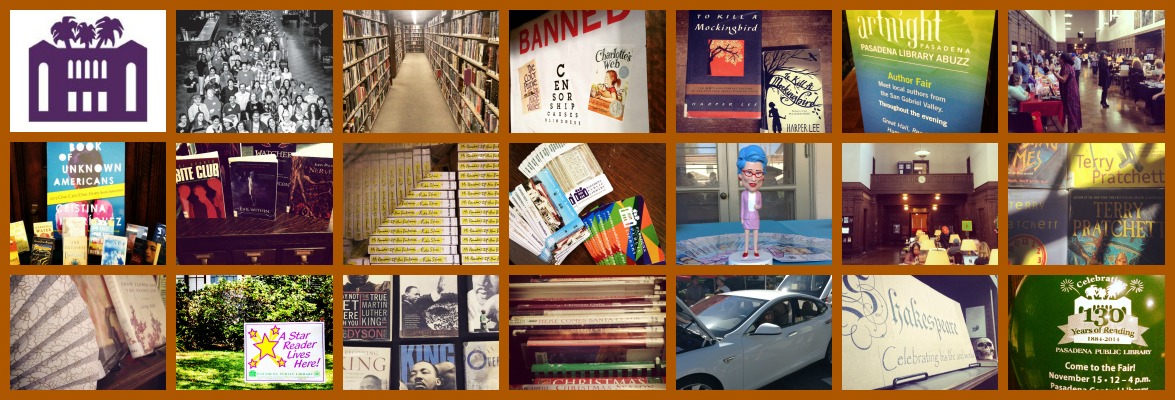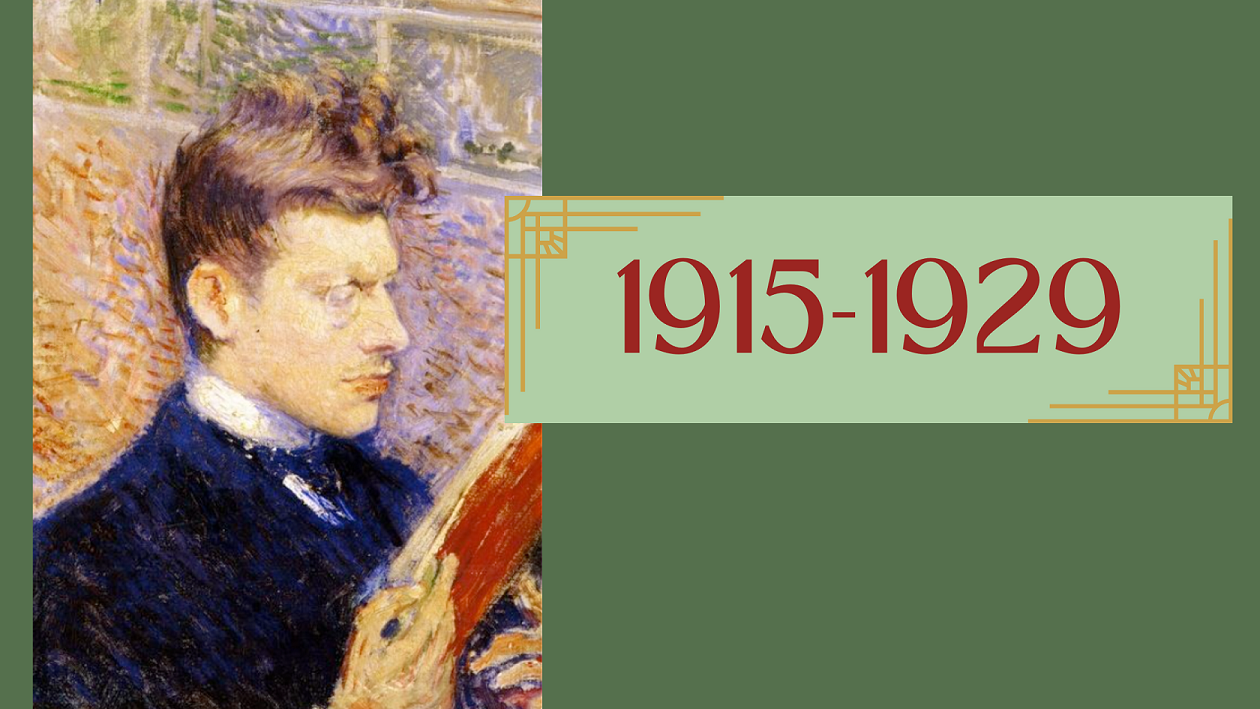Many big changes came along in the next 15 years in the US, and the world. The Great War, to be redubbed World War I after we survived a second global conflict toward the second half of the Twentieth Century. Following the end of the ravages of the Great War and the Influenza Pandemic, the 1920s started off with a roar: flappers and the Jazz Age; Prohibition; women’s suffrage (the ratification of the 19th Amendment); and the continued flourishing of the Harlem Renaissance. Increasingly, Americans moved away from farming and into urban life; wealth increased dramatically, and the frenzy did not end until it did, suddenly and dramatically, with the Wall Street Crash of 1929 on October 28.
While all this cultural churn and change was happening, the titles that follow were being published and likely read at the Pasadena Public Library, inside the brand-new beautiful Central Library building, which was dedicated and open on February 12, 1927.
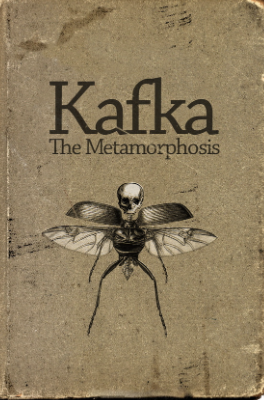 DieVerandlung (The Metamorphosis) by Franz Kafka, 1915
DieVerandlung (The Metamorphosis) by Franz Kafka, 1915
While published in German in 1915, and not translated/published in English until 1937, this novella is one that remains high on many readers’ lists for its uniqueness (ask high school literature students everywhere–chances are they have thoughts about this one). So its first publication is worth remarking. The Metamorphosis is perhaps Kafka’s best known and most widely studied work of fiction. The novella tells the story of Gregor Samsa, a young salesman who is suddenly and inexplicably transformed into a giant beetle, and of his family’s attempt to cope with the calamity. As Gregor gradually adopts the habits and tastes of an insect, his parents and sister begin to regard him less as their beloved Gregor and more as a nuisance who must be dealt with if the rest of the family is to survive. The Metamorphosis exemplifies many of the stylistic and thematic traits commonly described as “Kafkaesque”—the novella maintains a neutral, unsentimental tone despite its bizarre and unnerving plot, dramatizes a son’s conflict with his parents (especially the father), and shows with morbid irony how people struggle to ignore or rationalize the disturbing elements in their lives.
 Read Along: The Metamorphosis [Graphic Novel] by Peter Kuper (2003): A brilliant, darkly comic reimagining of Kafka’s classic tale of family, alienation, and a giant bug. Acclaimed graphic artist Peter Kuper presents a kinetic illustrated adaptation of Franz Kafka’s The Metamorphosis. Kuper’s electric drawings—where American cartooning meets German expressionism—bring Kafka’s prose to vivid life, reviving the original story’s humor and poignancy in a way that will surprise and delight readers of Kafka and graphic novels alike.
Read Along: The Metamorphosis [Graphic Novel] by Peter Kuper (2003): A brilliant, darkly comic reimagining of Kafka’s classic tale of family, alienation, and a giant bug. Acclaimed graphic artist Peter Kuper presents a kinetic illustrated adaptation of Franz Kafka’s The Metamorphosis. Kuper’s electric drawings—where American cartooning meets German expressionism—bring Kafka’s prose to vivid life, reviving the original story’s humor and poignancy in a way that will surprise and delight readers of Kafka and graphic novels alike.
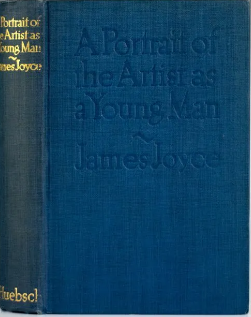 Portrait of the Artist as a Young Man by James Joyce, 1916
Portrait of the Artist as a Young Man by James Joyce, 1916
Set in Ireland in the late nineteenth century, Portrait of the Artist as a Young Man is a semi-autobiographical novel about the education of a young Irishman, Stephen Dedalus, whose background has much in common with Joyce’s. Stephen’s education includes not only his formal schooling but also his moral, emotional, and intellectual development as he observes and reacts to the world around him. At the center of the story is Stephen’s rejection of his Roman Catholic upbringing and his growing confidence as a writer. But the book’s significance does not lie only in its portrayal of a sensitive and complex young man or in its use of autobiographical detail. More than this, Portrait is Joyce’s deliberate attempt to create a new kind of novel that does not rely on conventional narrative. techniques. Rather than telling a story with a coherent plot and a traditional beginning, middle, and end, Joyce presents selected decisive moments in the life of his hero without the kind of transitional material that marked most novels written up to that time. The “portrait” of the title is actually a series of portraits, each showing Stephen at a different stage of development. And, although this story is told in a third-person narrative, it is filtered through Stephen’s consciousness.
Read Along: Everywhere You Don’t Belong by Gabriel Bump (2020): In this alternately witty and heartbreaking debut novel, Gabriel Bump gives us an unforgettable protagonist, Claude McKay Love. Claude isn’t dangerous or brilliant–he’s an average kid coping with abandonment, violence, riots, failed love, and societal pressures as he steers his way past the signposts of youth: childhood friendships, basketball tryouts, first love, first heartbreak, picking a college, moving away from home. Percolating with fierceness and originality, attuned to the ironies inherent in our twenty-first-century landscape, Everywhere You Don’t Belong marks the arrival of a brilliant young talent.
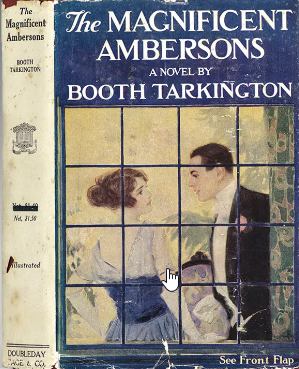 The Magnificent Ambersons by Booth Tarkington, 1918
The Magnificent Ambersons by Booth Tarkington, 1918
The Magnificent Ambersons is the chronicle of a wealthy family’s declining fortunes in a growing Midwestern city at the turn of the twentieth century. The tale focuses mainly on George Minafer, a child born into prosperity who has been spoiled by his mother and grandfather. He derides work as something for the lower classes, and runs roughshod over the town citizenry as if it were his inherited right. When the family’s wealth begins to run dry, George sees the world he knows slip away.
Although the novel has fallen out of favor with many critics and scholars, it remains a significant depiction of Midwestern city life in the early 1900s, as urbanization spread outward and radically shifted both the psychology and habits of all those it touched. Indeed, many critics–even while faulting the work on a literary level–have acknowledged its value as a detailed document of a bygone facet of American life.
Read Along: The Dutch House by Ann Patchett (2019). a richly moving story that explores the indelible bond between two siblings, the house of their childhood, and a past that will not let them go. The Dutch House is the story of a paradise lost, a tour de force that digs deeply into questions of inheritance, love and forgiveness, of how we want to see ourselves and of who we really are. Set over the course of five decades, this novel is a dark fairy tale about two smart people who cannot overcome their past. Despite every outward sign of success, Danny and Maeve are only truly comfortable when they’re together. Throughout their lives they return to the well-worn story of what they’ve lost with humor and rage. But when at last they’re forced to confront the people who left them behind, the relationship between an indulged brother and his ever-protective sister is finally tested.
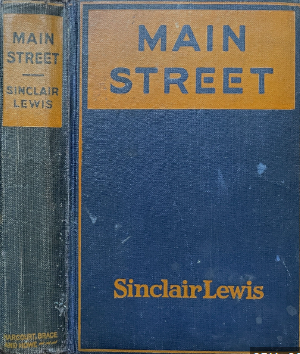 Main Street by Sinclair Lewis, 1920
Main Street by Sinclair Lewis, 1920
Main Street, originally published in 1920, is the story of a sophisticated young woman who moves to a small town in the American Midwest in 1912 and struggles against the small-minded culture of the citizens who live there. The town, Gopher Prairie, is closely patterned on Sauk Centre, Minnesota, which is where Sinclair Lewis grew up, although the book makes clear that it could be any of thousands of towns across the heartland. Carol Kennicott (née Milford), the protagonist of this novel, is a fascinating study in complexity: she loves her husband enough to live in Gopher Prairie with him, yet nearly enters several affairs in her longing for freedom; she hates the town for its gossip and its simplicity but wants nothing more than to make it better. The book touches on eternal American issues, such as women’s rights, business among friends, and the spirit of anti-intellectualism that has always been at the center of small-town America, where sensitivity is often equated with self-absorption. Main Street was an immediate, phenomenal success when it was published in 1920, making it the book of the century up to that point.
Read Along: My Name is Lucy Barton by Elizabeth Strout (2016): Lucy Barton is recovering slowly from what should have been a simple operation. Her mother, to whom she hasn’t spoken for many years, comes to see her. Gentle gossip about people from Lucy’s childhood in Amgash, Illinois, seems to reconnect them, but just below the surface lie the tension and longing that have informed every aspect of Lucy’s life: her escape from her troubled family, her desire to become a writer, her marriage, her love for her two daughters. Knitting this powerful narrative together is the brilliant storytelling voice of Lucy herself: keenly observant, deeply human, and truly unforgettable.
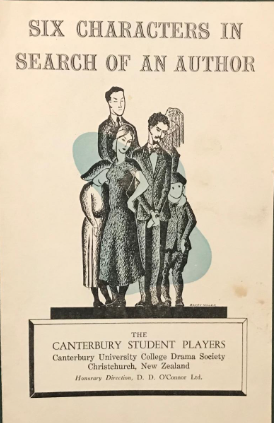 Six Characters in Search of an Author [Play] by Luigi Pirandello, 1921
Six Characters in Search of an Author [Play] by Luigi Pirandello, 1921
Pirandello’s Six Characters in Search of an Author is widely regarded as one of the greatest works of modernist theater. Since its initial production in Rome in 1921, the play has challenged audiences’ unquestioning assumptions of truth and the nature of personal identity. Critics consider the play the fullest expression of Pirandello’s mature theory of dramatic art, what later came to be called “Pirandellism”–a quasi-philosophy concerned with such issues as the limits of the theater, the nature of creativity, the paradoxical superiority of the artificial over the human, and the conflict between life and form. Through its depiction of the stage as an artificial world and its deliberate blurring of the boundaries between art and life, appearance and reality, Six Characters in Search of an Author heralded the self-conscious use of the theater that became a hallmark of modernist drama.
Read Along: Slipping by John Toomey (2017): When Albert Jackson, a middle-aged school teacher, catches a glimpse of the infinite universe and his own tiny insignificance he cannot shake himself free of regret for a life all but squandered. In a blind and demented attempt to salvage something from his life, he sets off, half-lucidly, on a libertine mission to reclaim life, to live it exclusively on his terms. But the wild and sinister crime he plots, so characterized by delusion, sets him on a path to irreversible destruction.
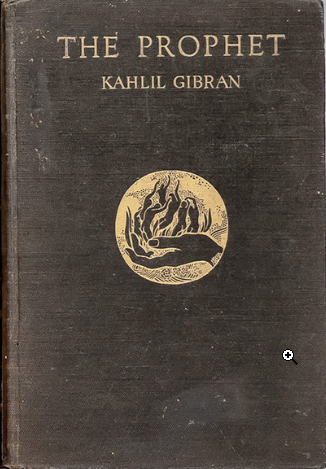 The Prophet by Kahlil Gibran, 1923
The Prophet by Kahlil Gibran, 1923
The Prophet is a book of 26 poetic essays. A best-selling book of popular mysticism, The Prophet was translated into more than a dozen languages. Gibran’s narrative frame relates that the Prophet, about to board a ship that will take him home after 12 years in a foreign city, is stopped by a group of the city’s inhabitants, who ask him to speak to them about the mysteries of life. He does so, discussing love, marriage, beauty, reason and passion, and death, among other topics. Although many critics thought Gibran’s poetry mediocre, The Prophet achieved cult status among American youth for several generations.
Read Along: Maktub: An Inspirational Companion to The Alchemist by Paulo Coelho (2024): From the author of The Alchemist comes this companion, a collection of stories and parables unlocking the mysteries of the human condition. Gathered from Paulo Coelho’s daily column of the same name, Maktub, meaning “it is written,” invites seekers on a journey of faith, self-reflection, and transformation. As Paulo Coelho explains, “Maktub is not a book of advice–but an exchange of experiences.” Each story offers an illuminated path to see life and the lives of our fellow people around the world in new ways, allowing us to tap into universal truths about our collective and individual humanity. As Coelho writes, “a man who seeks only the light, while shirking his responsibilities, will never find illumination. And one who keep his eyes fixed upon the sun . . . ends up blind.” These wise tales offer the perspective of talking snakes, old women climbing mountains, disciples querying their masters, Buddha in dialogue, mysterious hermits, and many saints addressing the mysteries of the universe.
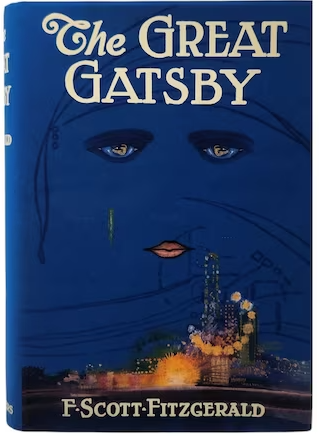 The Great Gatsby by F. Scott Fitzgerald, 1925
The Great Gatsby by F. Scott Fitzgerald, 1925
The Great Gatsby is a novel by F. Scott Fitzgerald, first published on April 10, 1925, by Charles Scribner’s Sons. It received mixed reviews from critics and was a commercial failure. It was never out of print in Fitzgerald’s lifetime, but only because there were copies left over from its initial printings. Interest in the book was rekindled after his death, and it is now regarded as the greatest novel of the Jazz Age; indeed, it has been Scribner’s best-selling title for years since its rediscovery.
Nick Carraway, the narrator, tells the story of Jay Gatsby, his mysterious and fabulously wealthy neighbor on Long Island in 1922, famous for the wild parties he hosts at his mansion. The two become friends, and when Gatsby discovers that Nick is the cousin of his long-lost love, Daisy Buchanan, the stage is set for a destructive conflict involving Gatsby; Nick; Daisy; her husband, Tom; and several others. The novel is at once a love story and a biting critique of the American dream. Its themes, ranging from romantic relationships and deceit to the inescapability of the past, elevate it to the ranks of great American literature.
Read Along: Rules of Civility by Amor Towles (2011): On the last night of 1937, twenty-five-year-old Katey Kontent is in a second-rate Greenwich Village jazz bar when Tinker Grey, a handsome banker, happens to sit down at the neighboring table. This chance encounter and its startling consequences propel Katey on a year-long journey into the upper echelons of New York society–where she will have little to rely upon other than a bracing wit and her own brand of cool nerve.
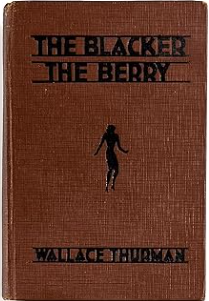 The Blacker the Berry by Wallace Thurman, 1929
The Blacker the Berry by Wallace Thurman, 1929
“The tragedy of her life was that she was too black,” declares the narrator at the start of this powerful novel of intraracial prejudice. Emma Lou Morgan lives in a world of scorn and shame, not because her skin is black, but because it’s too black. No one among her family, teachers, and friends has a word of consolation or hope for the despised and rejected girl. With nothing to lose, eighteen-year-old Emma Lou leaves her home in Idaho, seeking love and acceptance on a journey that ultimately leads her to the legendary community of the Harlem Renaissance. A source of controversy upon its 1929 publication, The Blacker the Berry was the first novel to openly address color prejudice among black Americans. Author Wallace Thurman, an active member of the Harlem Renaissance, vividly recaptures the era’s mood and spirit. His portrait of a young woman adrift in the city forms an enduringly relevant reflection of the search for racial, sexual, and cultural identity.
Read Along: The Vanishing Half by Brit Bennett (2020). The Vignes twin sisters will always be identical. But after growing up together in a small, southern black community and running away at age sixteen, it’s not just the shape of their daily lives that is different as adults, it’s everything: their families, their communities, their racial identities. Ten years later, one sister lives with her black daughter in the same southern town she once tried to escape. The other secretly passes for white, and her white husband knows nothing of her past. Still, even separated by so many miles and just as many lies, the fates of the twins remain intertwined.
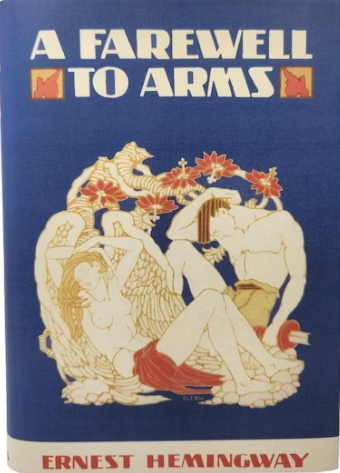 A Farewell to Arms by Ernest Hemingway, 1929
A Farewell to Arms by Ernest Hemingway, 1929
A giant in the field of American literary modernism, Ernest Hemingway has long been called an important spokesman for the “lost generation” of disillusioned, war-wounded young Americans after the First World War. His 1929 novel A Farewell to Arms, a tragic love story about an American ambulance lieutenant and an English nurse, was based on Hemingway’s own experiences on the Italian front. In the novel, Hemingway uses his characteristic unadorned prose, clipped dialogue, and understatement to convey an essentially cynical view of the world. Critics were at first skittish about Hemingway’s linguistic and sexual frankness but soon began to regard him as a pioneer in establishing a writing style that came to dominate realistic writing for many decades. Although feminist critics have denigrated Hemingway’s alleged male bias, and others have found the love story unsatisfying, A Farewell to Arms remains a powerful statement about the effects of the horrors of war on ordinary people.
Read Along: The Poppy Wife: a Novel of the Great War by Caroline Scott (2019). This unforgettable debut novel is a sweeping tale of forbidden love, profound loss, and the startling truth of the broken families left behind in the wake of World War I. Survivors of the Great War are desperately trying to piece together the fragments of their broken lives. While many have been reunited with their loved ones, Edie’s husband Francis has not come home. Francis is presumed to have been killed in action, but Edie believes he might still be alive. Harry, Francis’s brother, was there the day Francis was wounded. He was certain it was a fatal wound–that he saw his brother die–but as time passes, Harry begins questioning his memory of what happened. Could Francis, like many soldiers, merely be lost and confused somewhere? Hired by grieving families, Harry returns to the Western Front to photograph gravesites. As he travels through battle-scarred France and Belgium gathering news for British wives and mothers, he searches for evidence of Francis. As Harry and Edie’s paths converge, they get closer to the truth about Francis and, as they do, are faced with the life-changing impact of the answers they discover.
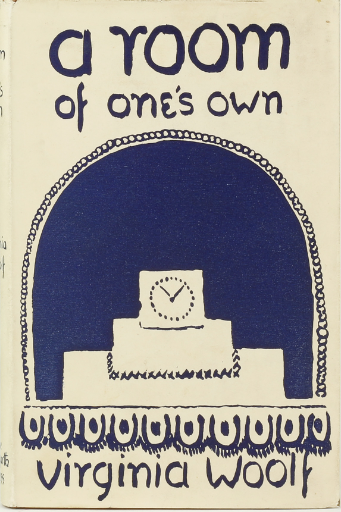 A Room of One’s Own by Virginia Woolf, 1929
A Room of One’s Own by Virginia Woolf, 1929
Bestselling Fiction in the U.S. 1915-1929
Turmoil [Part 1 of the Growth Trilogy Series] by Booth Tarkington
Seventeen by Booth Tarkington
Mr. Britling Sees It Through by H. G. Wells
The U.P. Trail by Zane Grey
The Four Horsemen of the Apocalypse by Vicente Blasco Ibáñez
The Man of the Forest by Zane Grey
Main Street by Sinclair Lewis
If Winter Comes by A.S. M. Hutchinson
Black Oxen by Gertrude Franklin Horn Atherton
So Big by Edna Ferber
The Constant Nymph by Margaret Kennedy
The Private Life of Helen of Troy by John Erskine
Elmer Gantry by Sinclair Lewis
The Bridge of San Luis Rey by Thornton Wilder
All Quiet on the Western Front by Erich Maria Remarque
